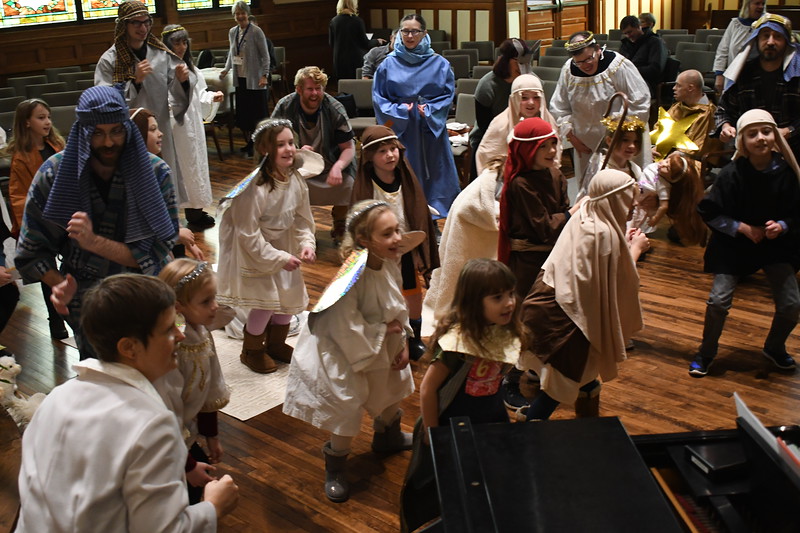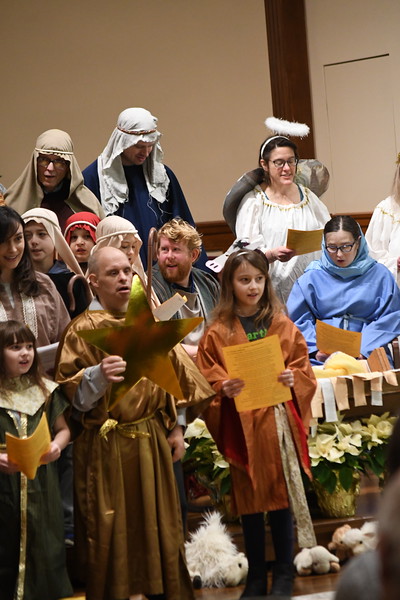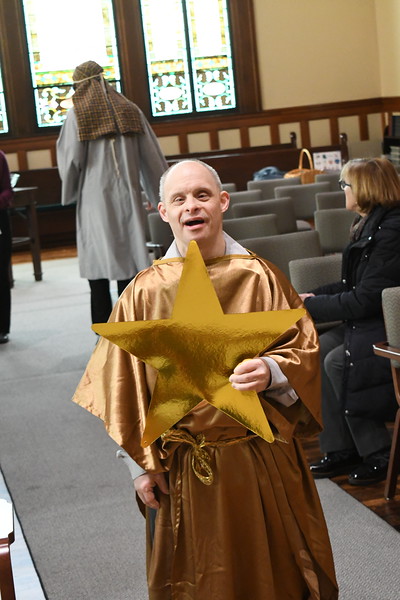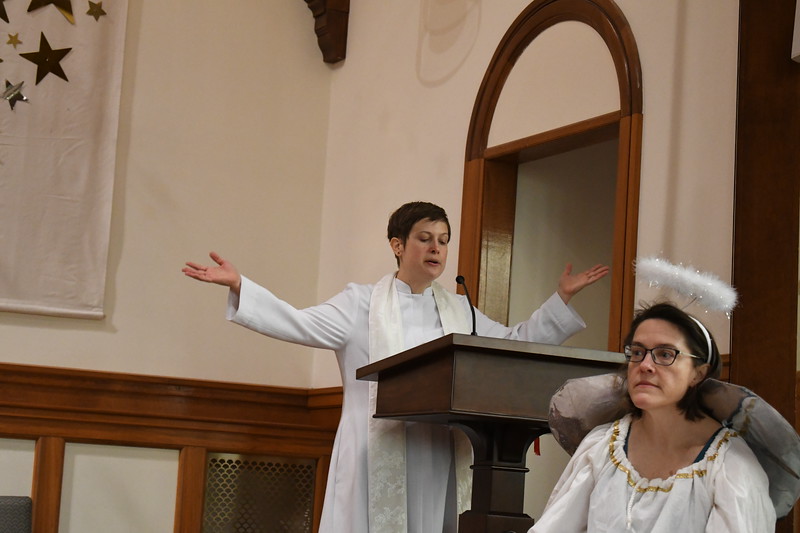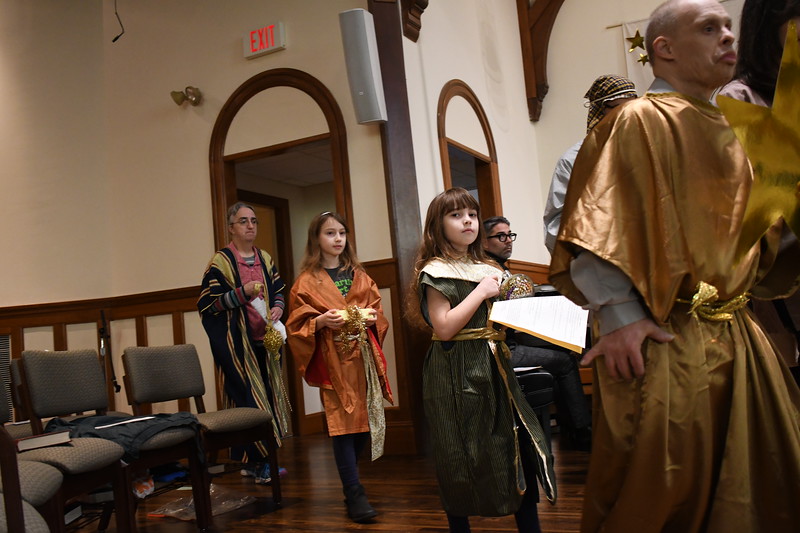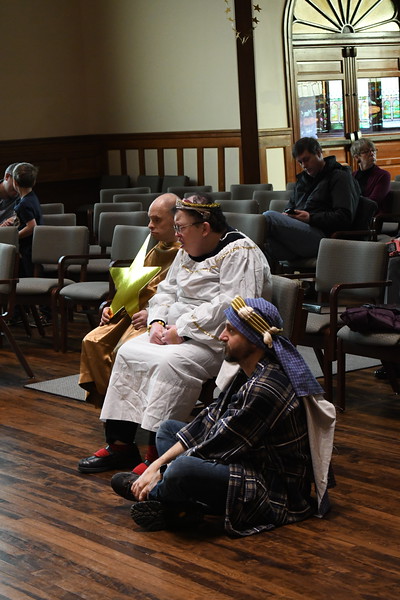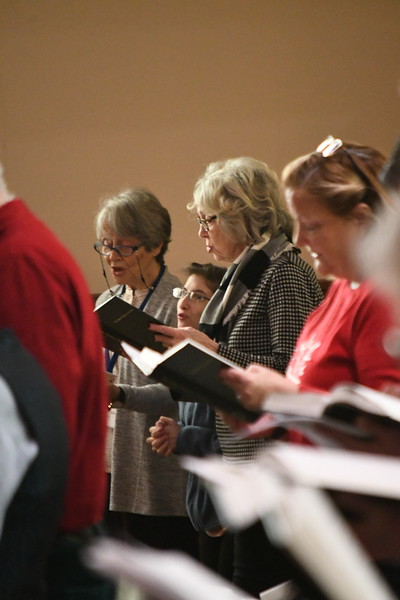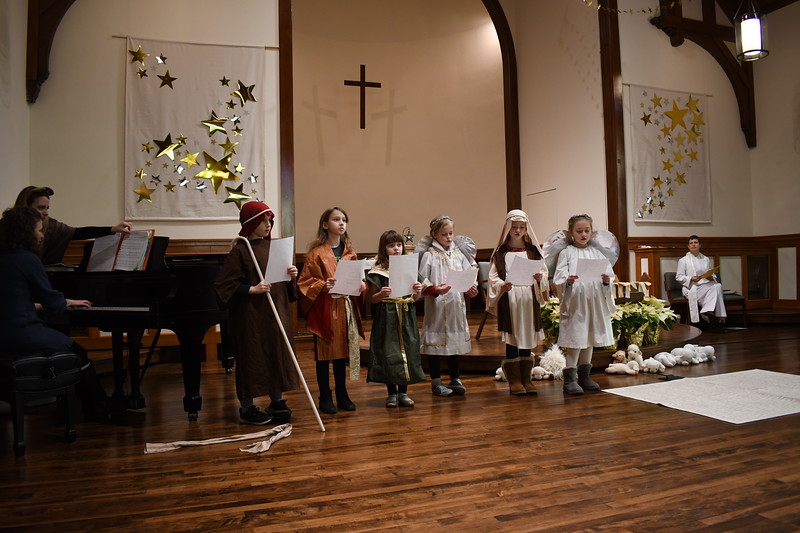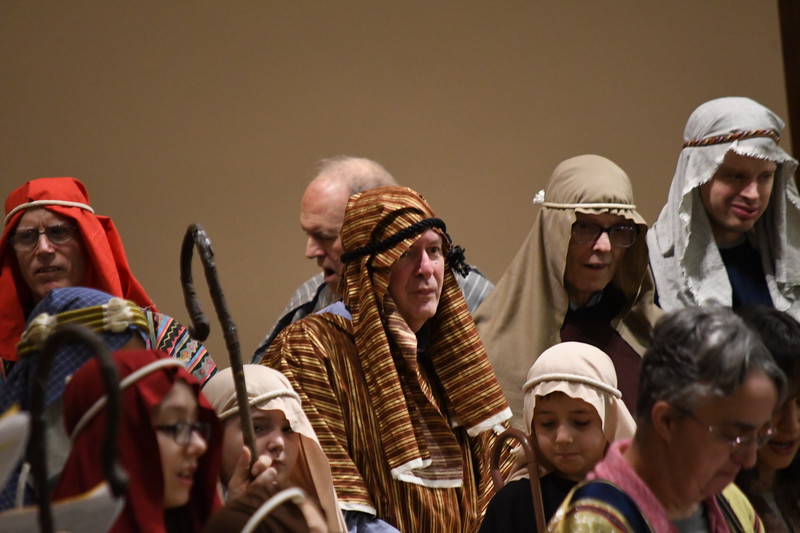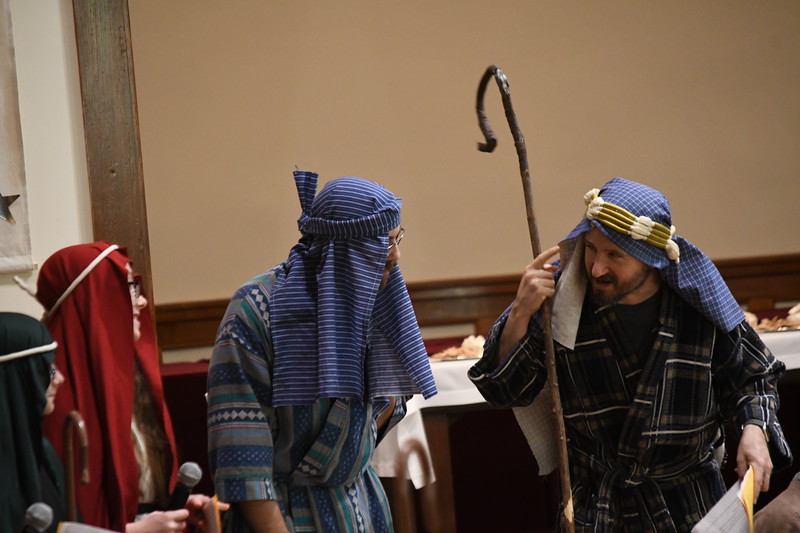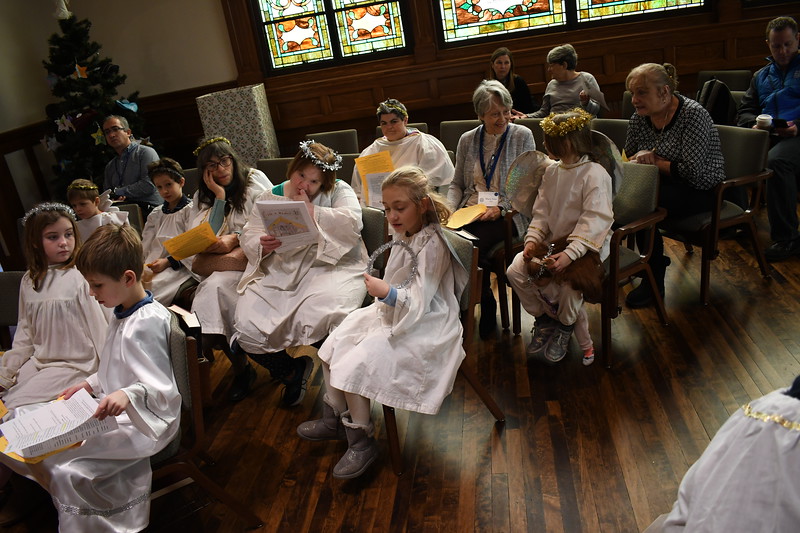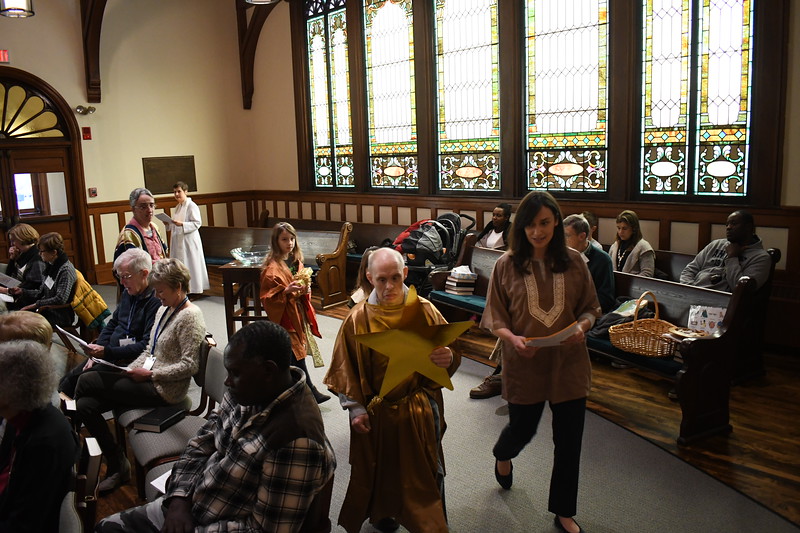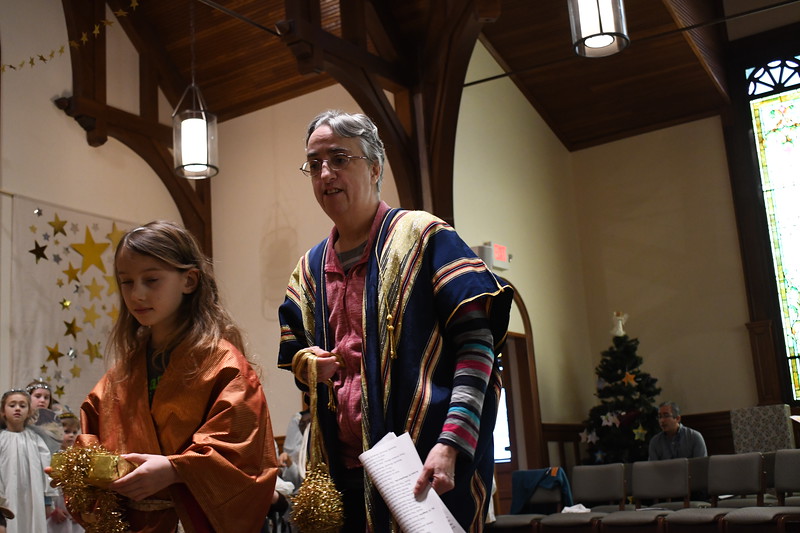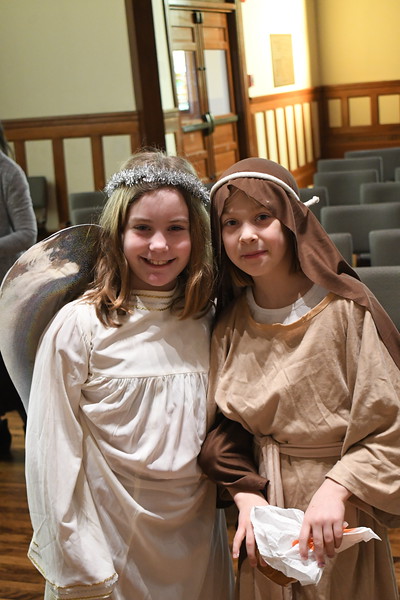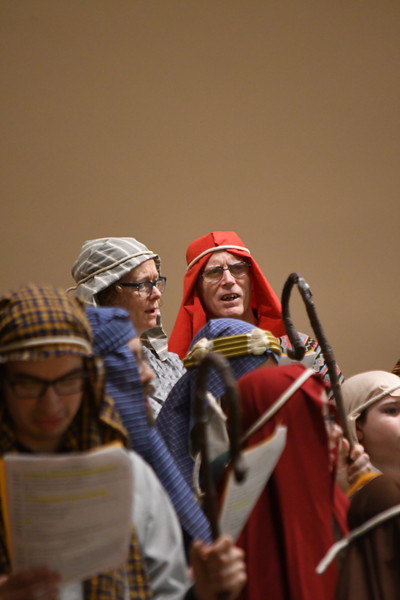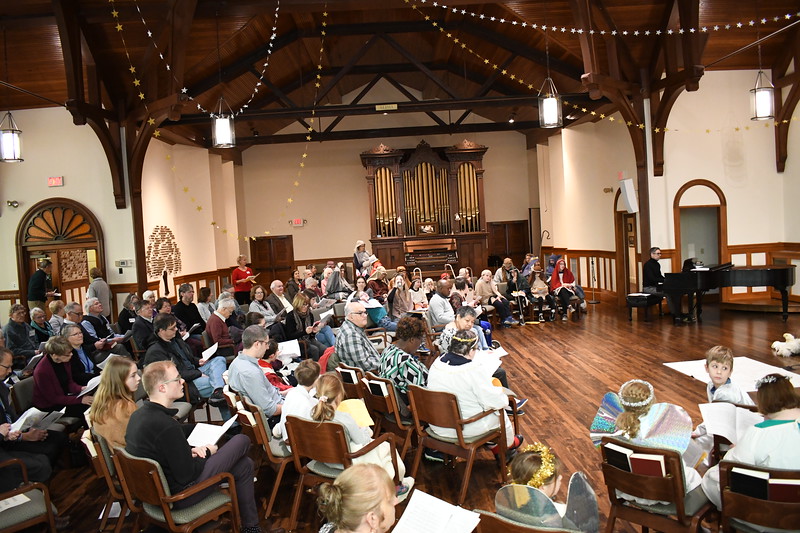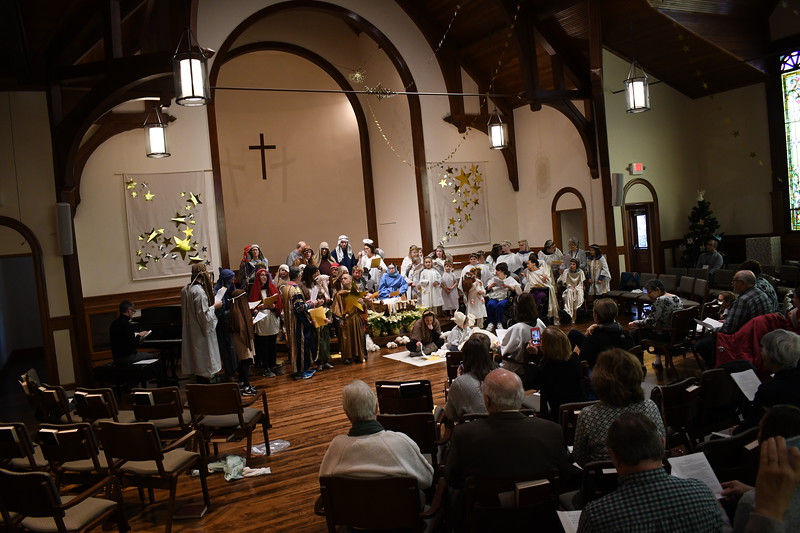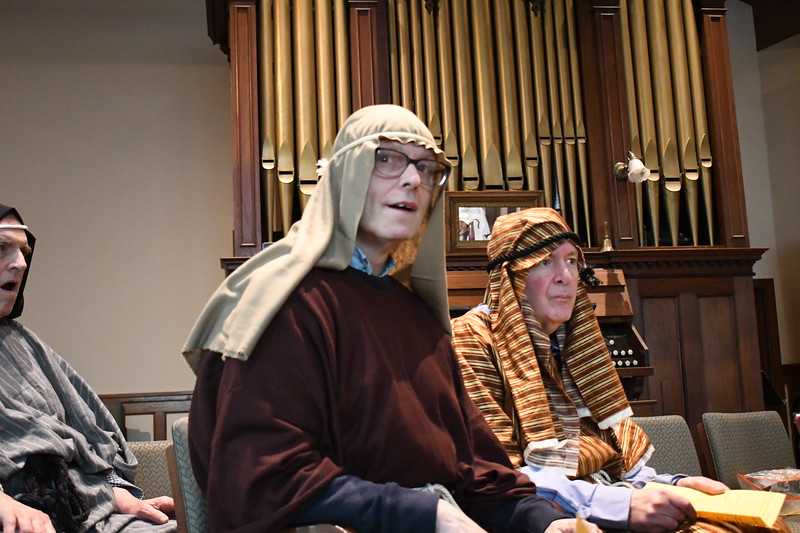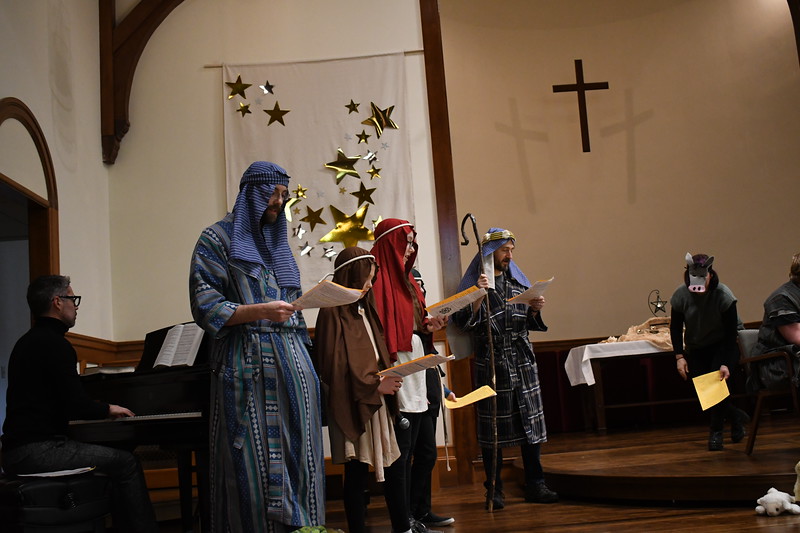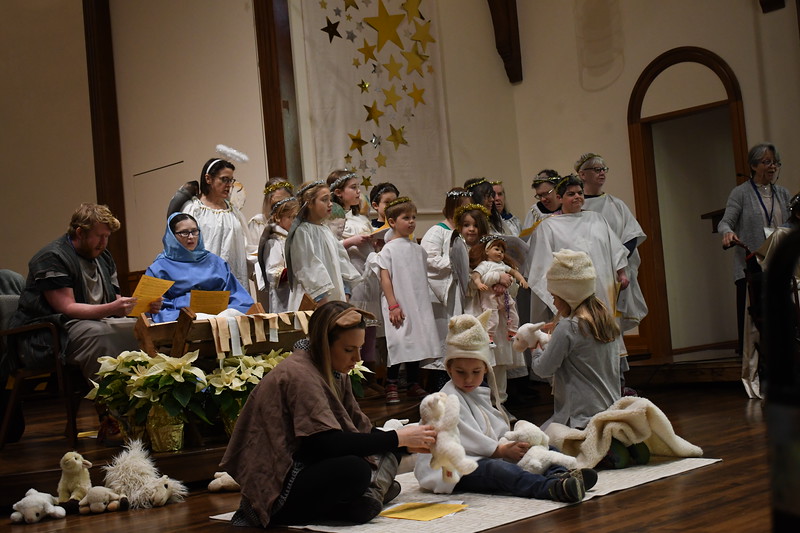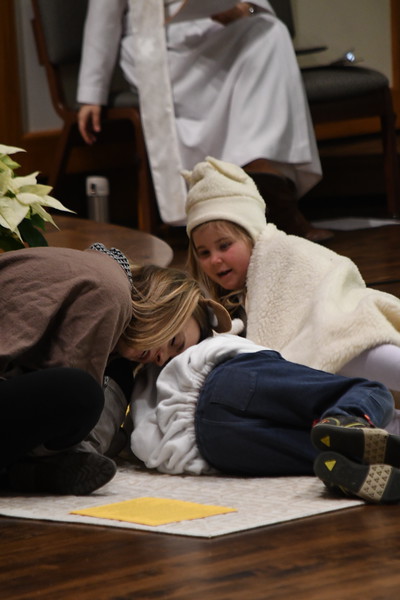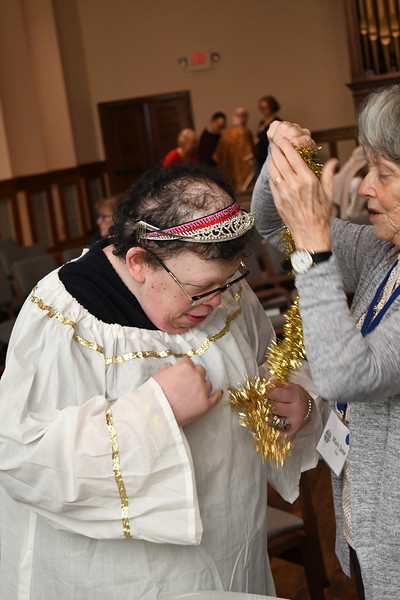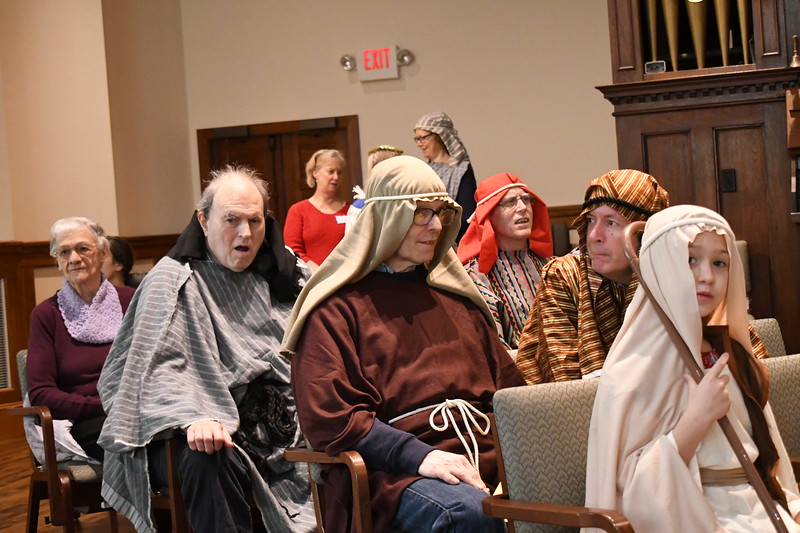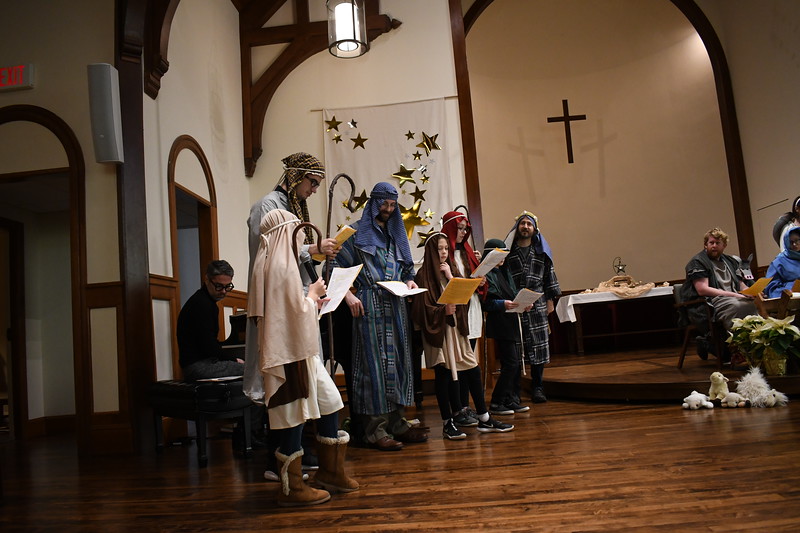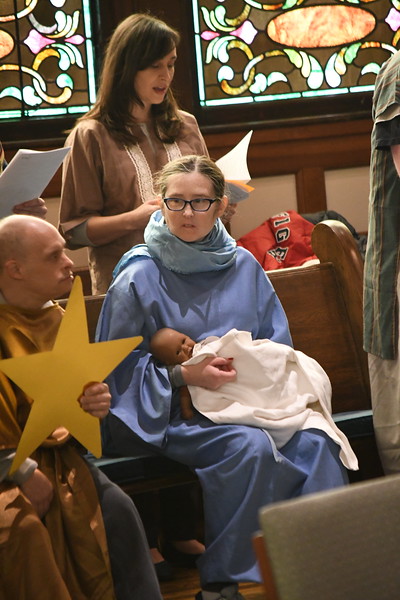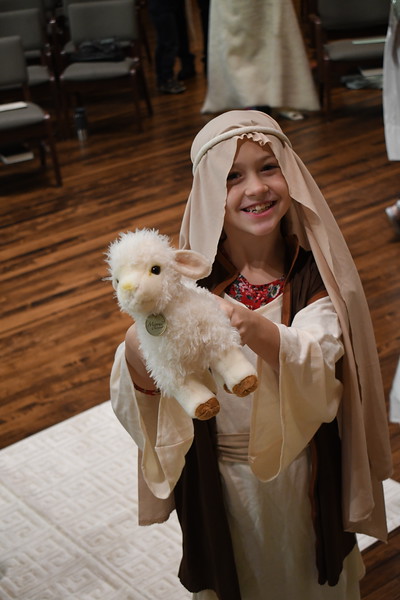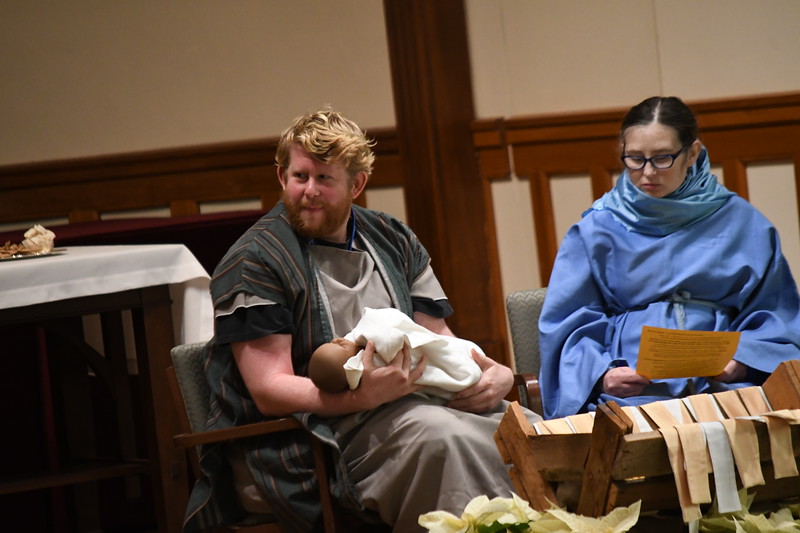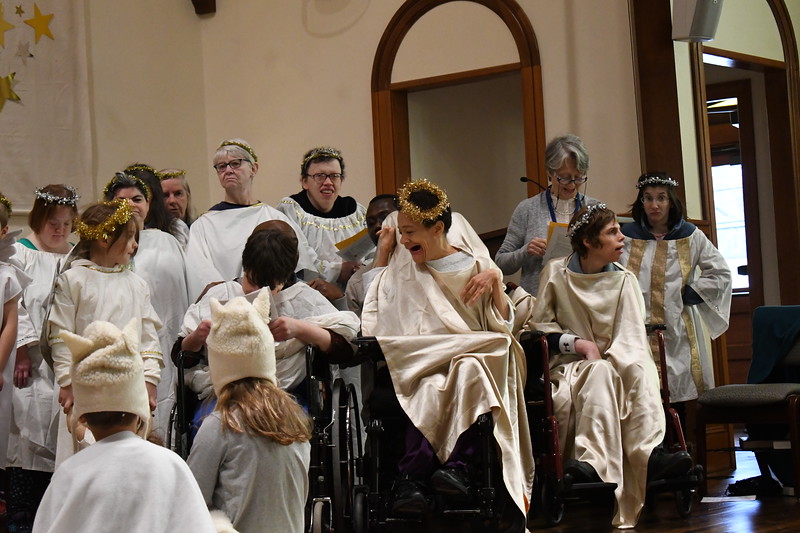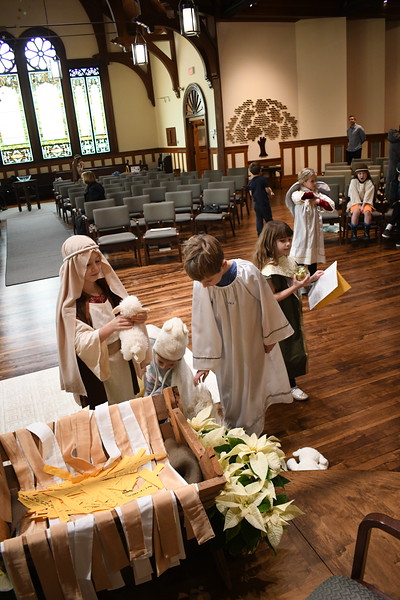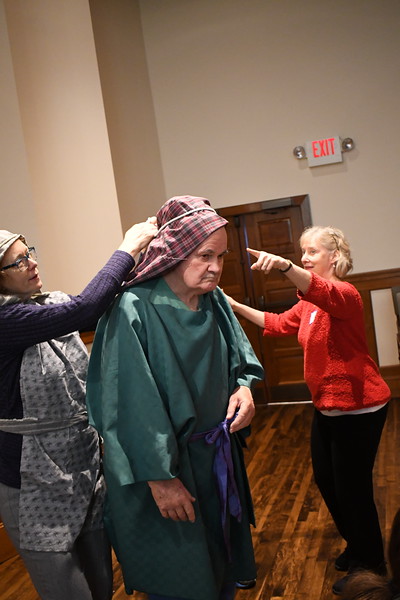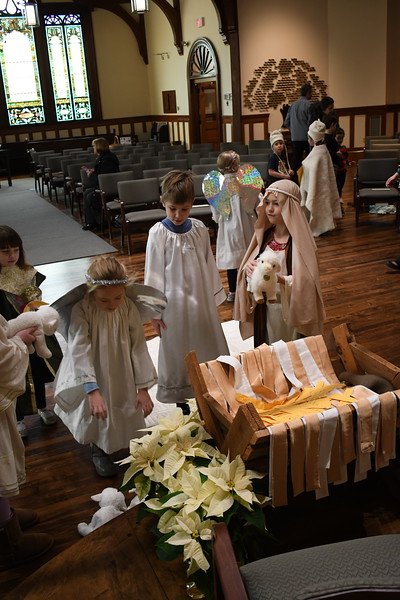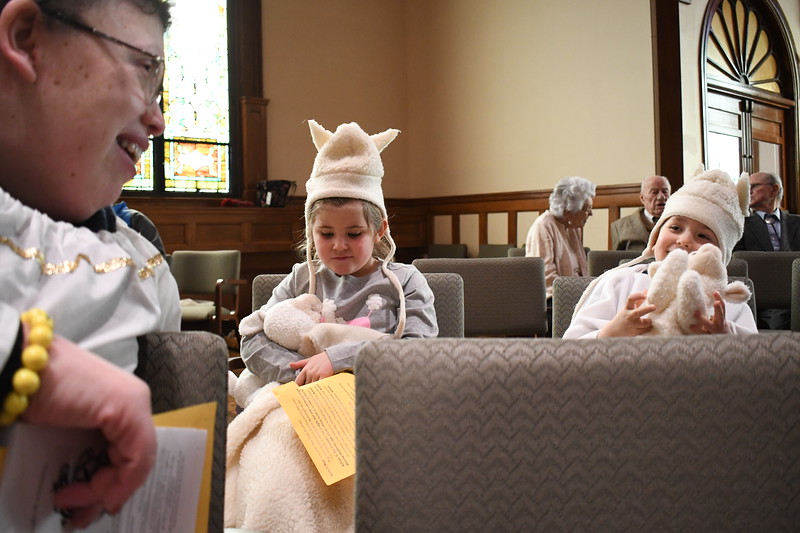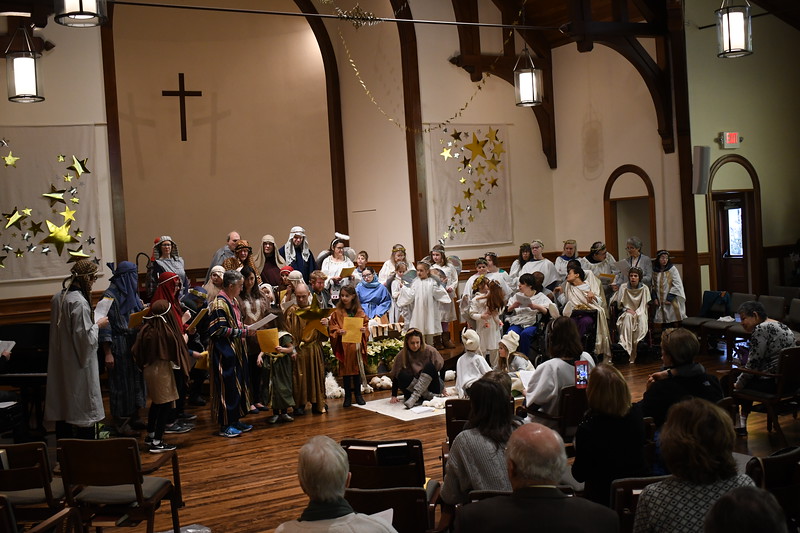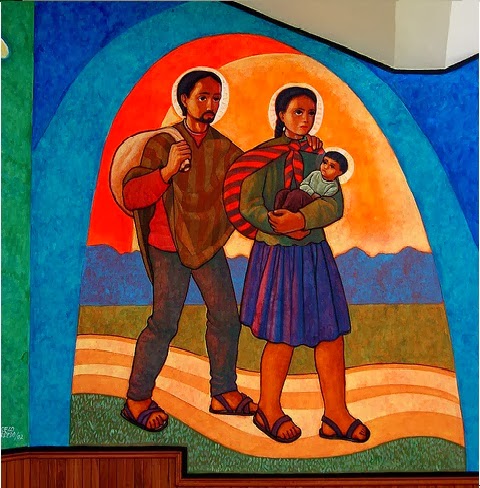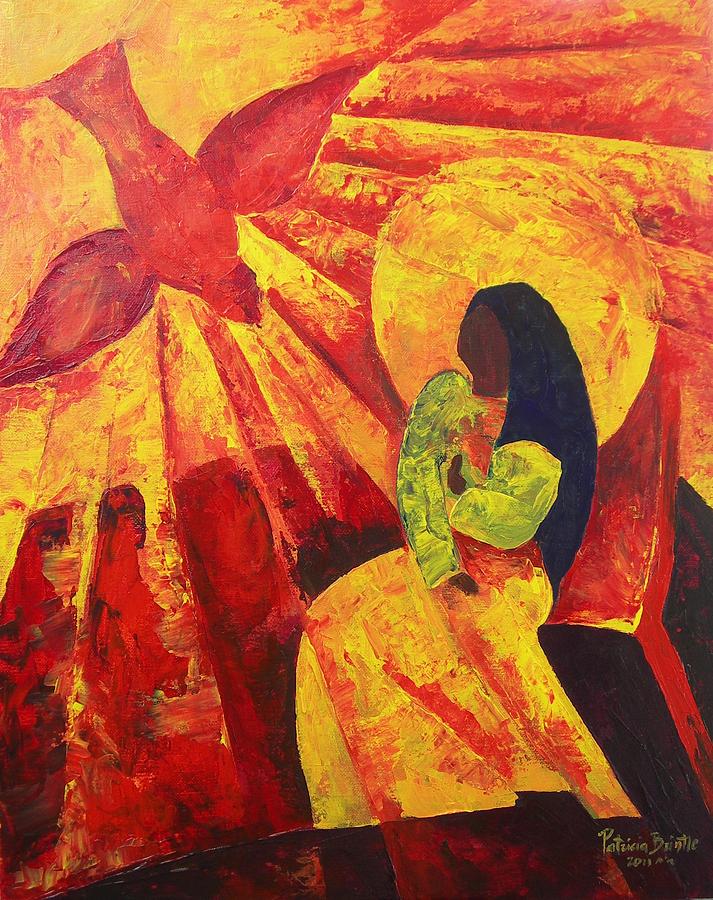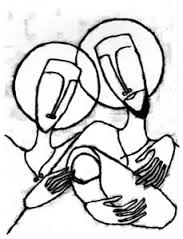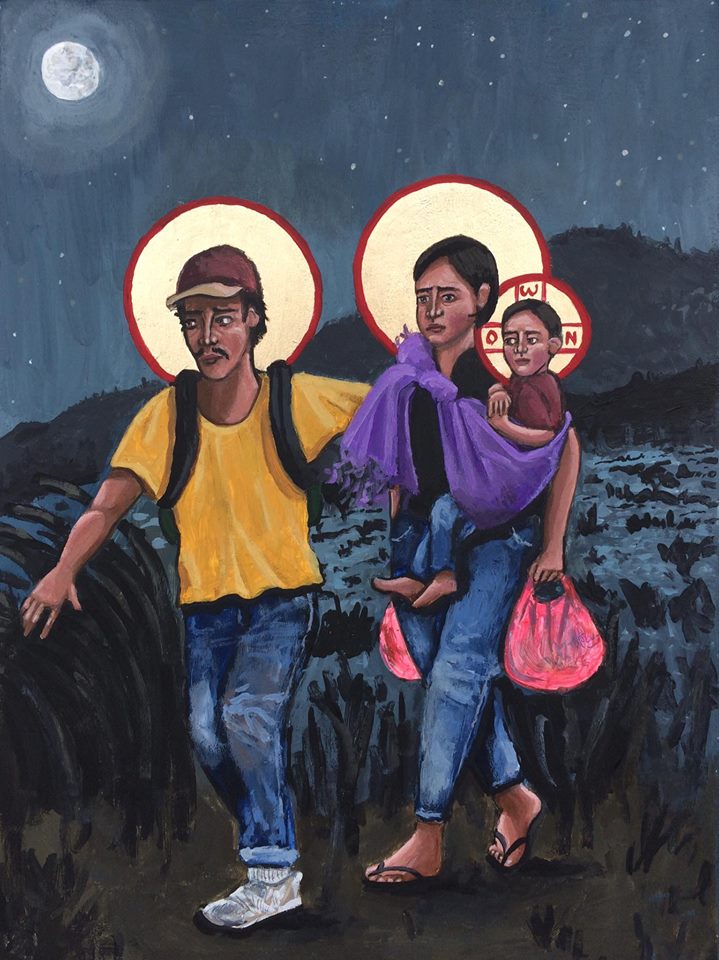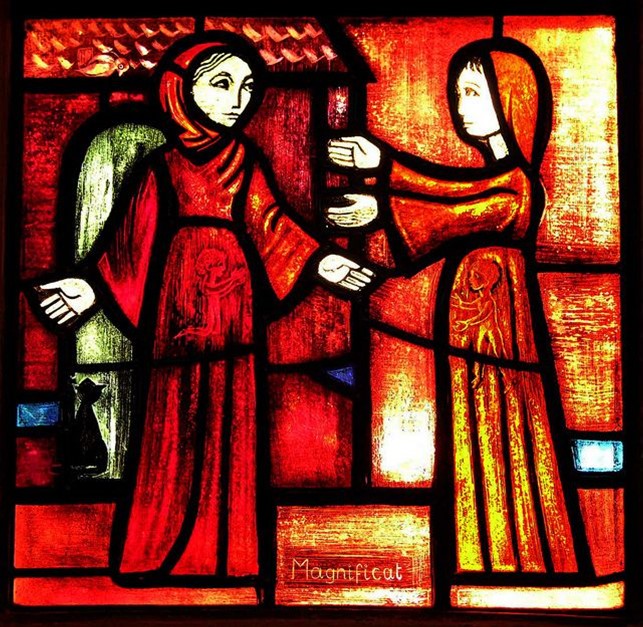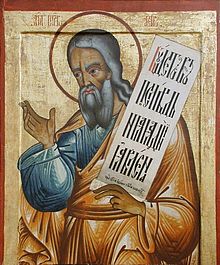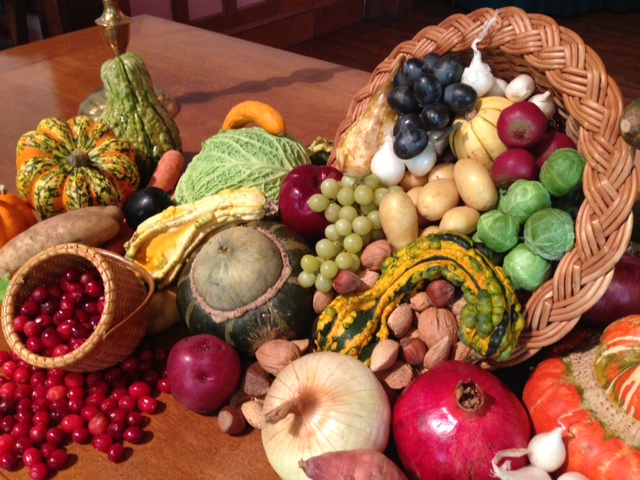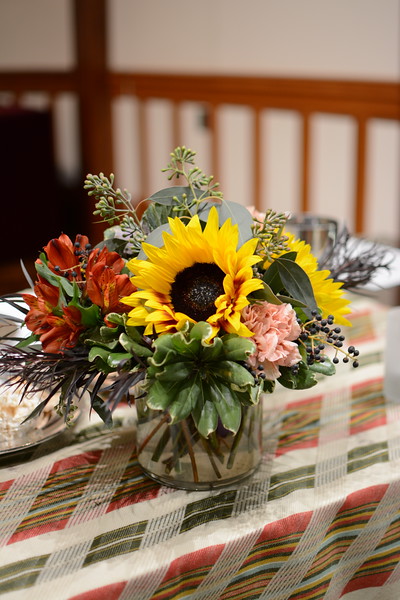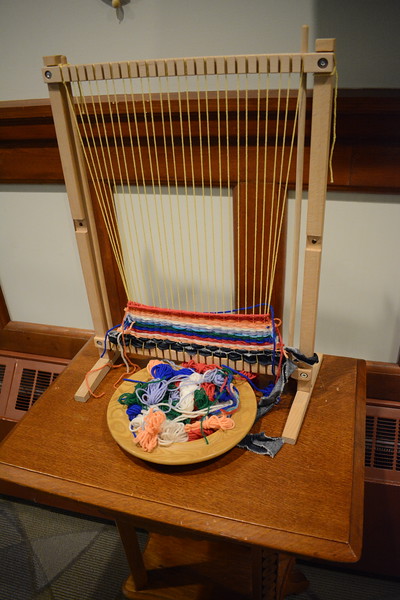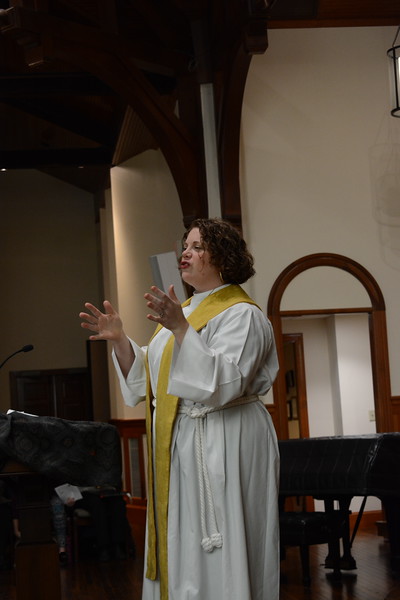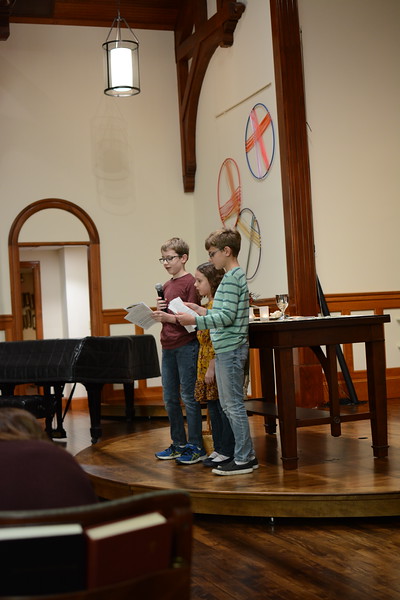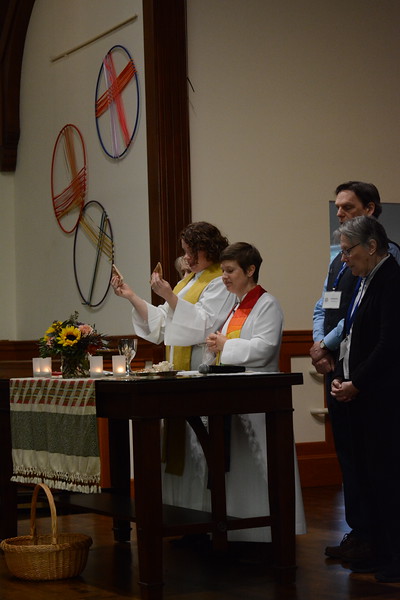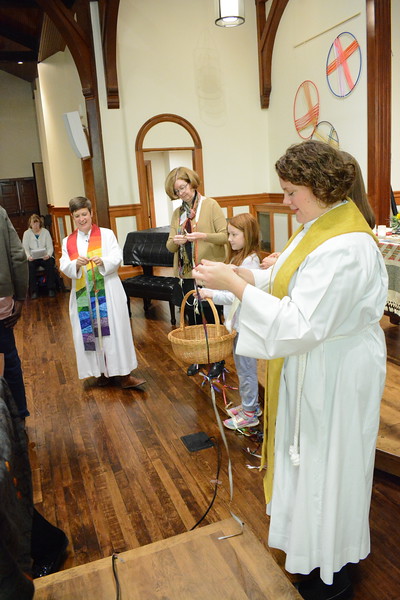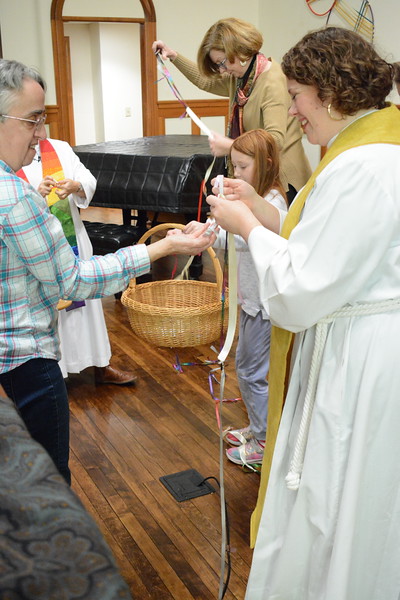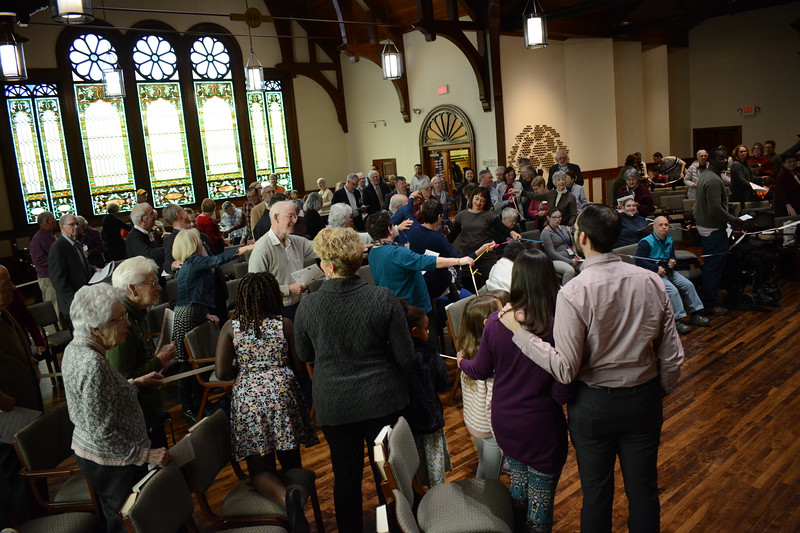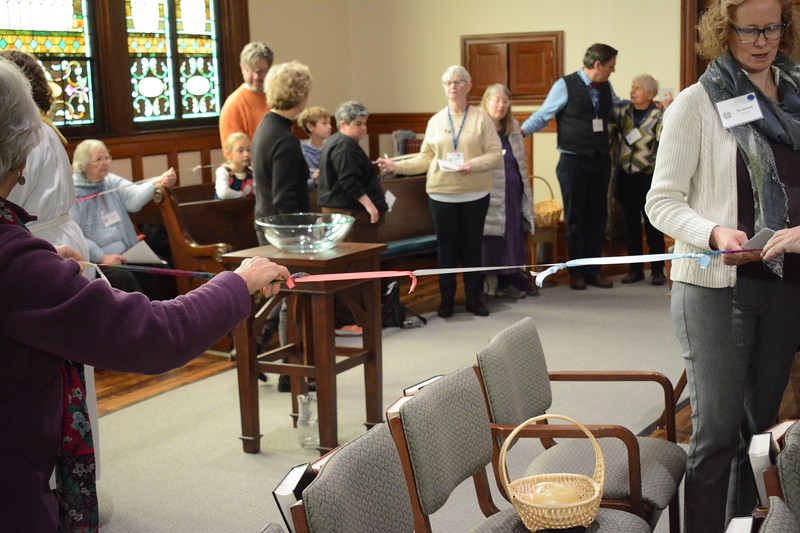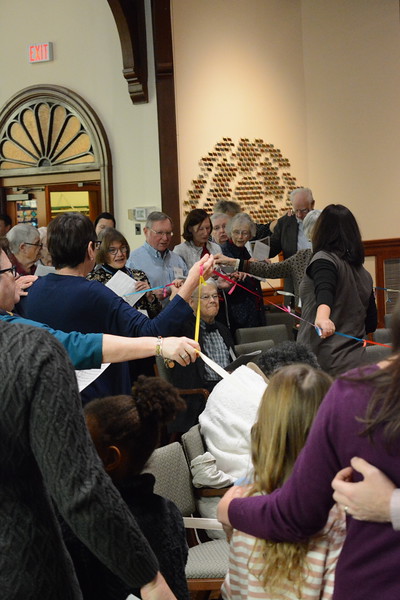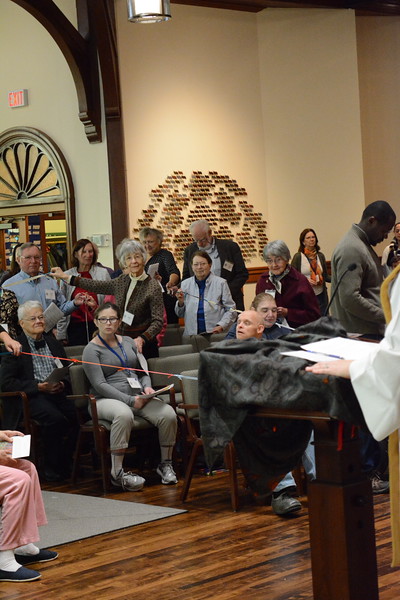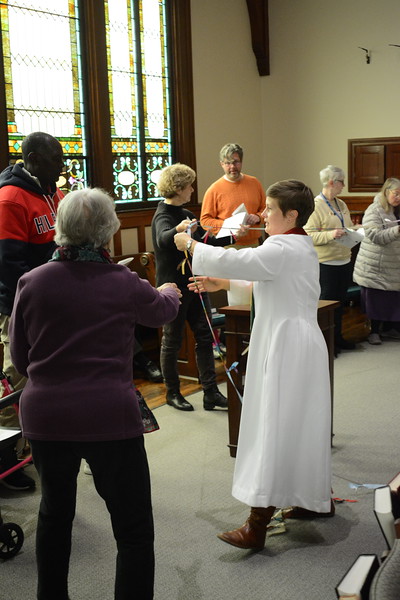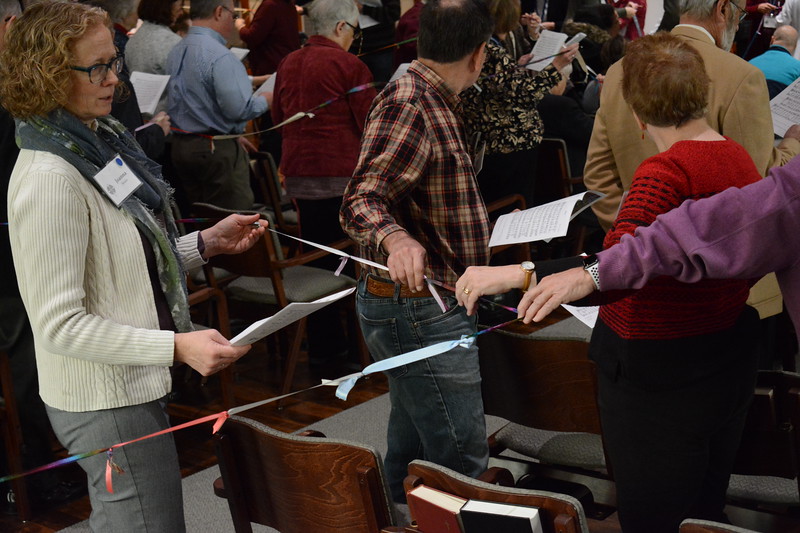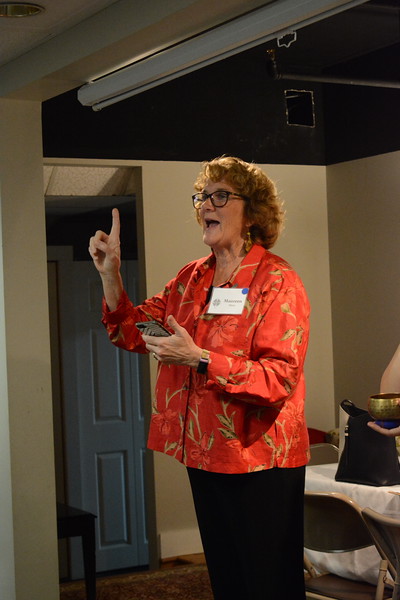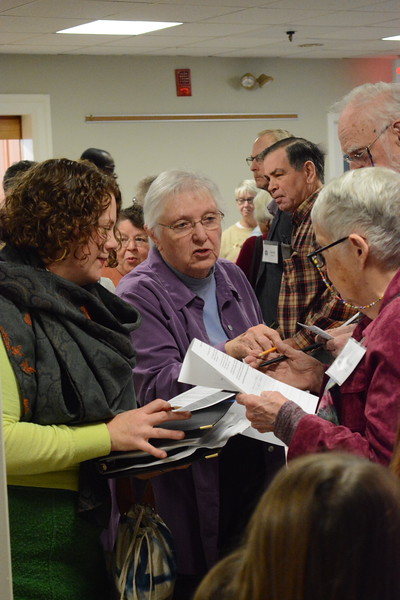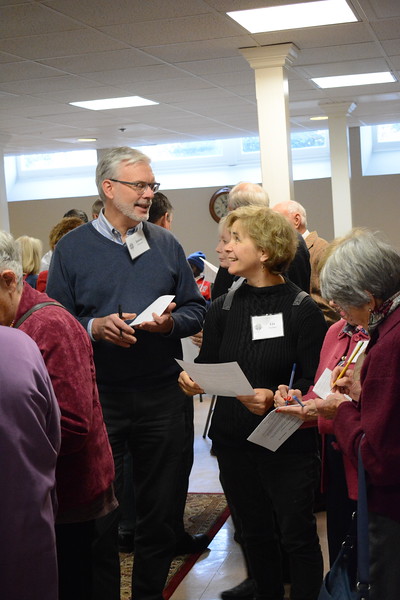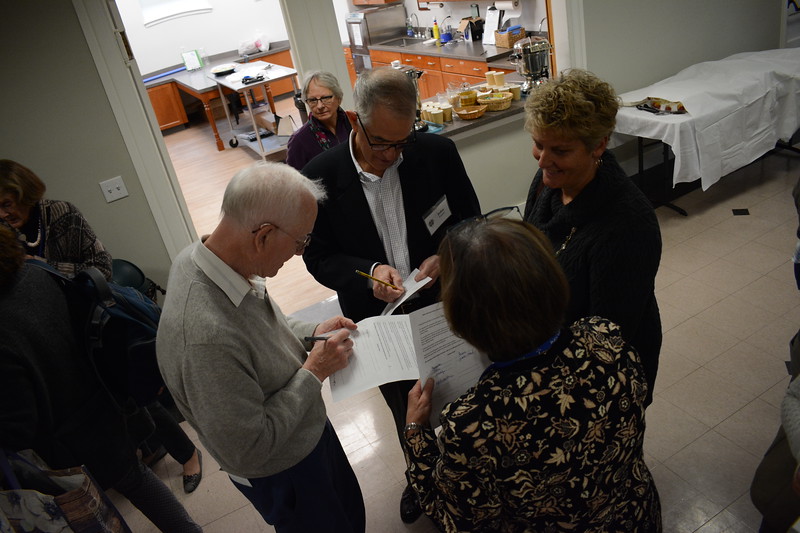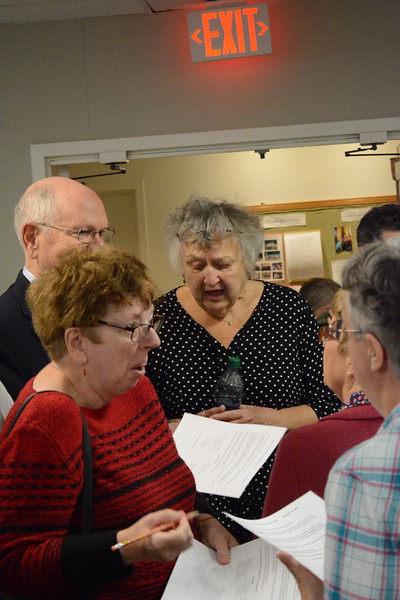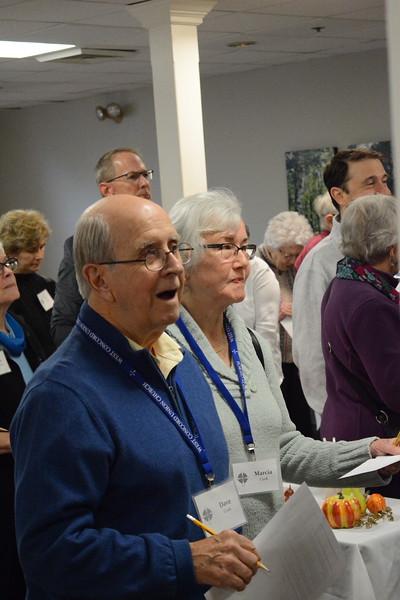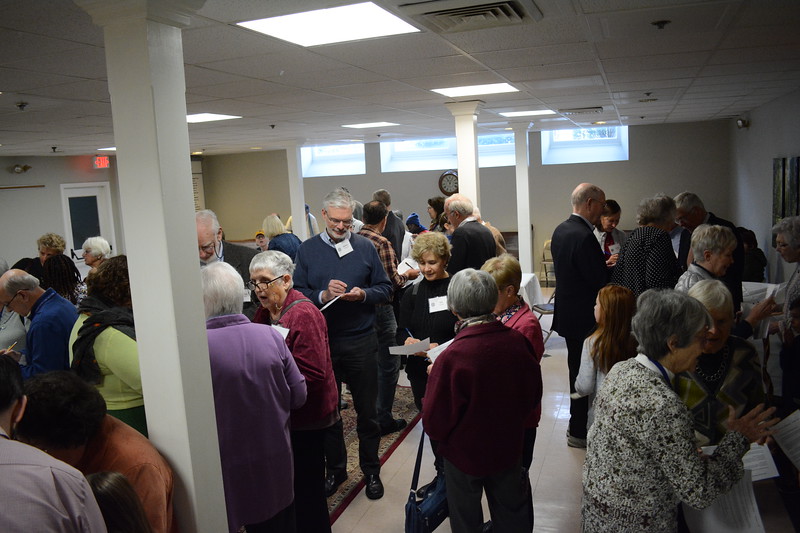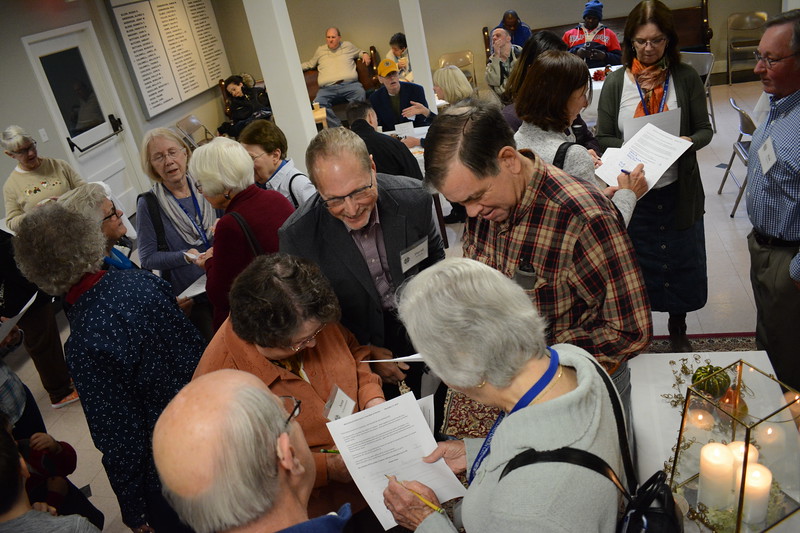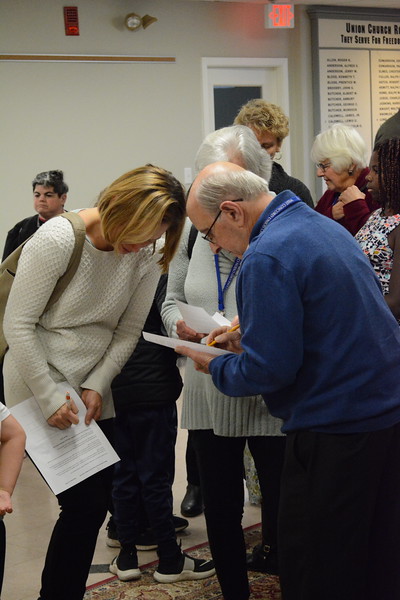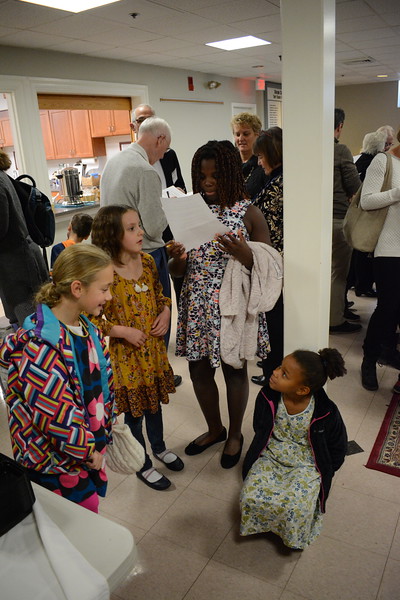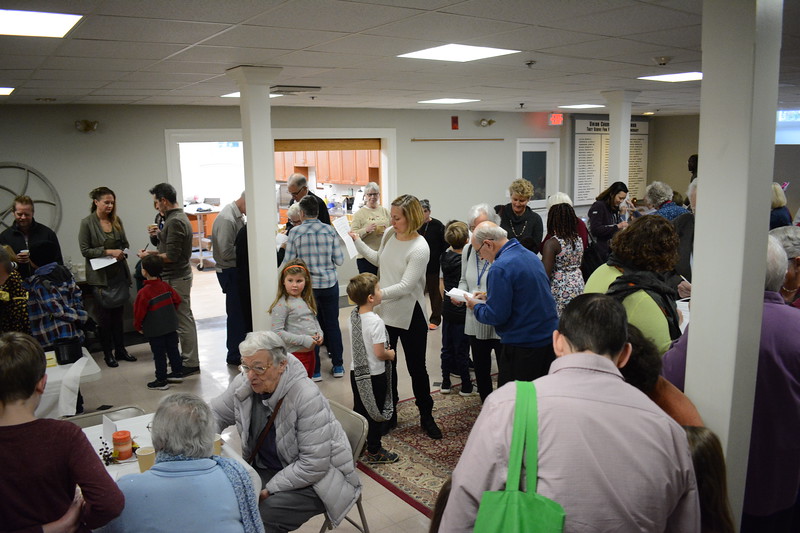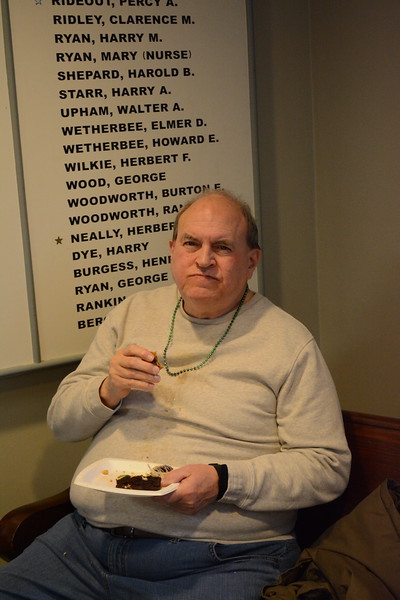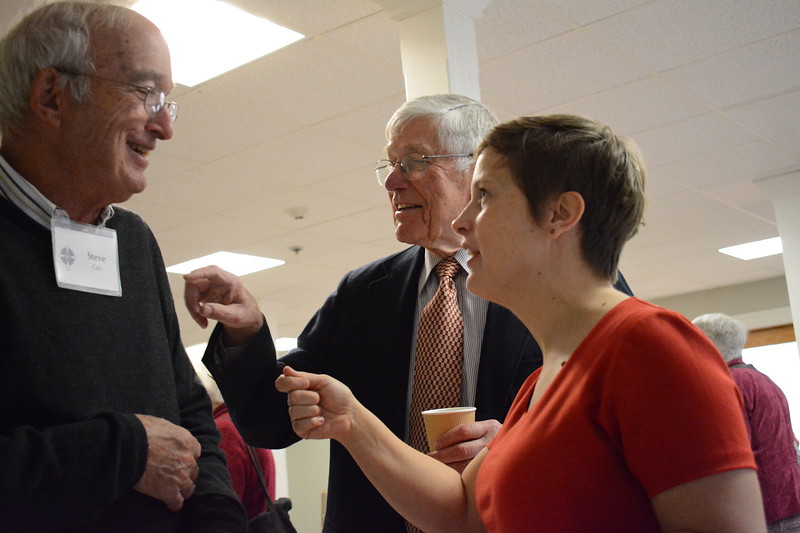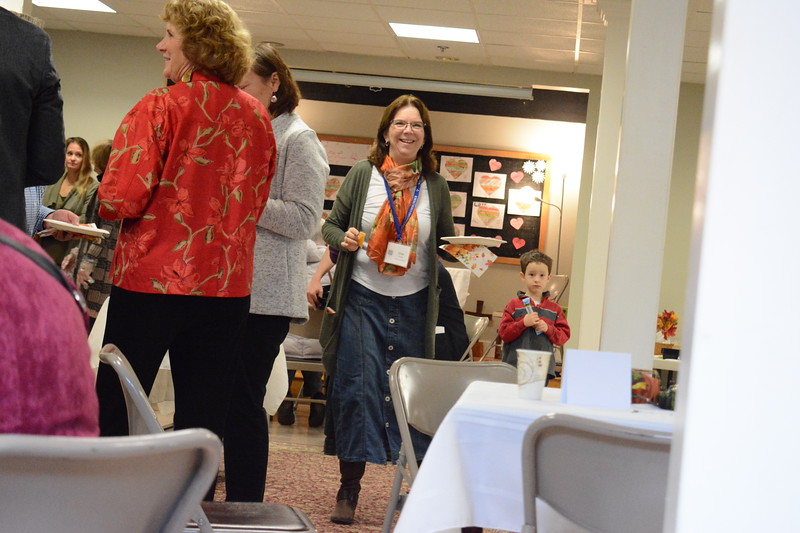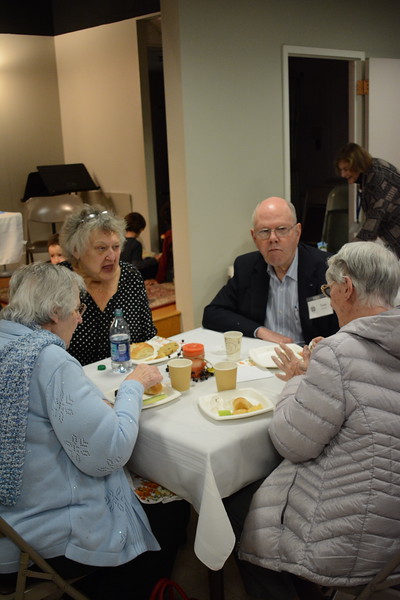On January 12th, we heard three members reflect on why they do what they do at WCUC.
From Ellie Garvey:
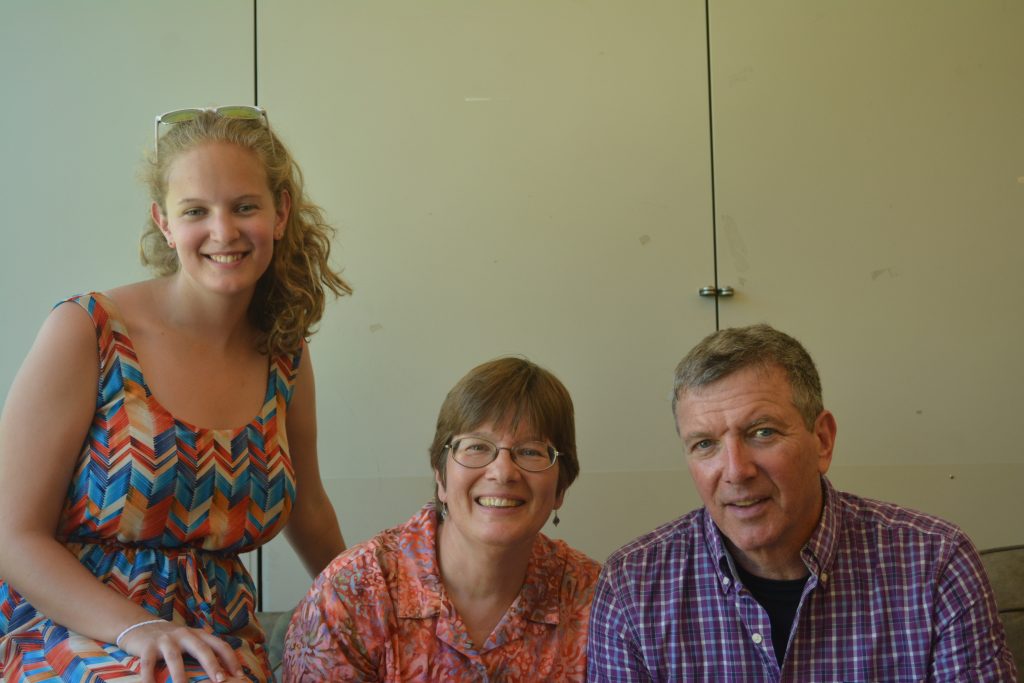
My father used to tell me I had an affliction, like my mother. He called it “the rising arm syndrome.” It manifests itself when I hear the words, “Would anyone be willing to…?” or “Could someone…? And my volunteer arm rises up. I don’t consider this an affliction. Helping and volunteering are part of who I am, and I like it that way.
West Concord Union Church has no shortage of volunteer opportunities, and I have thrown myself into the community with abandon. In addition to singing and ringing in the senior and bell choirs, I hold an elected position on the Worship and Welcome Ministry. I have served on this ministry for 6 years, and that means my time is up. In accordance with the church’s constitution, I have to step down. While I am a bit sad about that, it does give me the opportunity to tell you about everything that I love about serving on this ministry.
Most of what you see up here in the sanctuary on Sunday mornings is under the auspices of the Worship and Welcome Ministry. We guide the ushers and greeters, we prepare and serve communion, we assist with Joys and Concerns, and we review Sunday worship services to improve on our dedication to making them welcoming and inclusive. In the summer, we coordinate the outdoor services, and we are in charge of hospitality and fellowship, from coffee hour to funeral receptions. And I love all of that. My favorite parts are serving communion and helping with fellowship events. And the best part of the Ministry is the team of leaders that I have had the privilege of working with.
The first time I set up the communion table was way back when I was on the board of Deacons, the precursor to Worship and Welcome. As I laid out the bread and juice, it occurred to me that I was setting Jesus’ table. And that was a pretty cool thing to be doing! For those of you who are wondering if you could serve on Worship and Welcome in the future, the answer is yes! Please speak to me after worship today and I will be happy to fill you in on the details of this vital service to the church.
It has been a privilege to serve WCUC in this capacity for six years, and I thank God for this community of volunteers. I’ll take a year off, and then we’ll see where my rising arm takes me next.
From John Fossett:
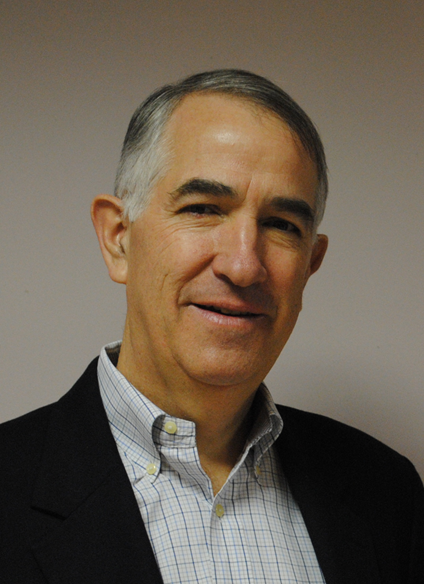
I joined WCUC in 1988, after being introduced by one Maynard Forbes. What I found here was a vibrant church, teeming with vitality and activity, and it has been, and surely will continue to be, a congregation that is a living affirmation of God’s call to service, providing innumerable opportunities for each of us to serve the church in some way. Some such roles require an ongoing commitment throughout the year, while others are those I call one-off or time limited commitments. Over the past several years, I have focused my efforts on the latter, serving as a member and Chair of the Investment Committee, as a greeter, usher, and coffee host, and helping with outside grounds cleanup and periodic setup for special events. One of my most favorite “roles” has been to provide rides to church for Annie and Fran, not easily able to get themselves here otherwise.
Over the years, service to church has given me pause to contemplate my formative days at the Wellesley Village Church, and how my late mother, Jane Fossett, taught me the power of individuals to help others through a helping hand or other simple acts of kindness. Her work was quite similar to what I see here: A quiet, yet abiding concern for the well-being of others, answering His call. Jane would be so pleased to know that I had re-established a faith connection with a place that shares her values and that pursues God’s call for us to serve others.
One of the major reasons I pursue volunteer activities at WCUC is the satisfaction I derive from the joy of strengthening personal connections with others, not only while greeting or ushering or hosting coffee hour, but also during the enjoyable rides to church with Annie and Fran. Any of these time-limited roles may be perfect for those of you unable to take on longer term or ongoing commitments, but wanting to serve the church in some way.
From Joanna Swain:
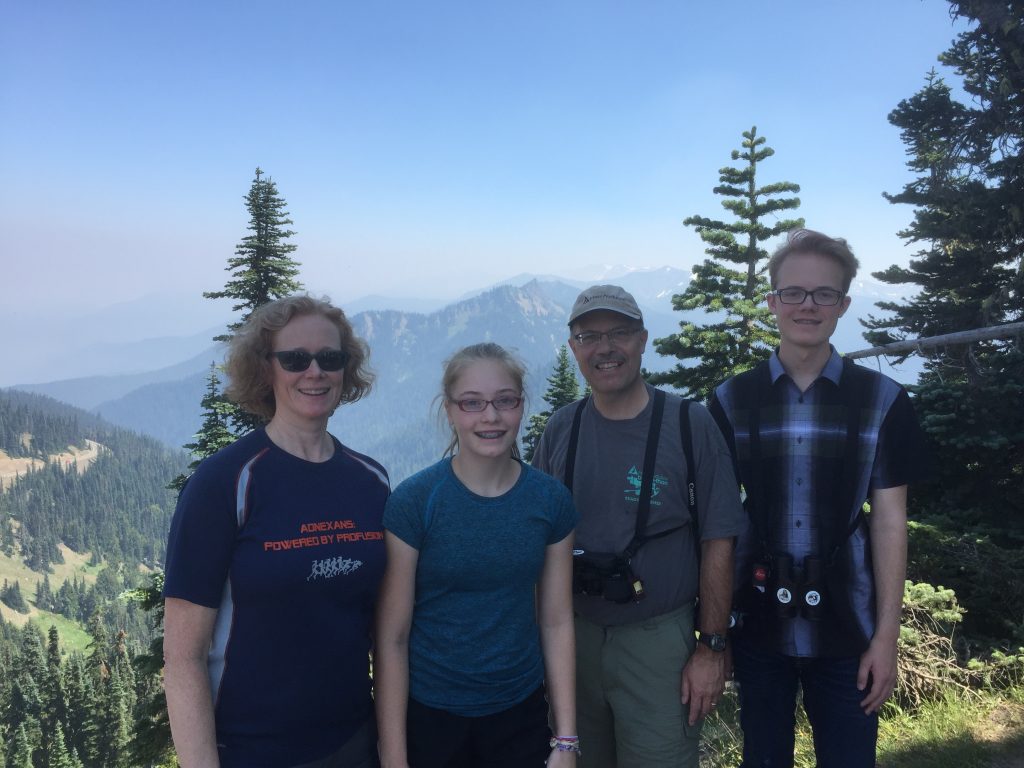
I’ve been participating in our Sunday Fellowship ministry for adults of all abilities since our family moved to Concord – more than 12 years now. In fact, the SF program is one of the key reasons we visited this church, and also why we never visited another! My involvement in Sunday Fellowship has ebbed and flowed through the years as my other commitments have come and gone. Sometimes I just go to a biweekly worship services and help with whatever job needs doing, like collating music sheets, writing down joys and concerns, or passing out name tags. Other times, I have helped to organize a specific event, like a dance complete with DJ and a photo booth. Recently, I’ve been sitting on the SF Team, along with several others from within our church and some from other faith communities. The SF team meets every couple of months to review past events, plan for new initiatives, and generally serve as a sounding board to Melissa Tustin, who is our paid and incredibly qualified SF Director.
Why is SF so important to me? To tell the truth, most of us here at WCUC are pretty good at presenting the best of ourselves on a Sunday morning. We are buttoned down and pretty self-contained, am I right?. But SF worship services are different. They are really “come as you are”. You can’t sing on key? Who cares! Did you have a fight with someone you live with? Who hasn’t! The services are rambunctious and sweet, with big emotions, and God’s love is palpable. I praise God for our Sunday Fellowship program, and the opportunity to participate and help make it happen.
